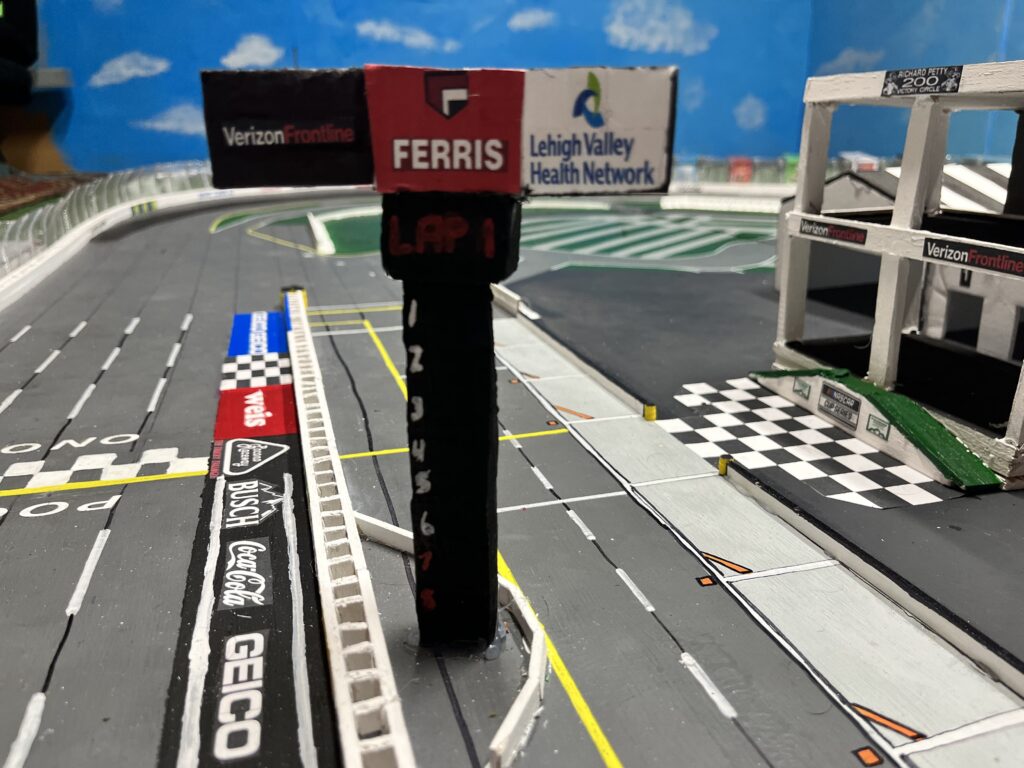NASCAR fans know virtually every fact and detail about the sport’s top drivers, and in today’s digital universe, it’s not only the television and radio media that share these racers’ incredible stories.
The last few years have seen the growth and maturity of NASCAR content creators, and ordinary race fans filming and editing short-form or long-form projects that all share a common admiration for the sport.
One of those forms of content creation includes the art of stop motion. Stop motion in the realm of NASCAR content creation isn’t a new platform. In fact, many creators, including Eric Estepp, host of The Out of The Groove show, launched YouTube channels with videos centered around stop-motion races.
Gavin Beers, a NASCAR fan of 13 years and counting, recalls watching races with his family, especially his grandparents. In addition, he began collecting an assortment of NASCAR die-cast cars, which he says is something he loved as a kid.

“The 2013 Aaron’s 499 at Talladega when Kurt Busch flipped on the backstretch was my earliest memory with NASCAR,” said Beers.
On his grandparents’ TV, Beers watched in amazement as the No. 78 of Kurt Busch launched skyward before coming to rest atop the hood of Ryan Newman’s oncoming No. 39 car. Whether it was that accident or seeing the cars thunder around the 2.66-mile superspeedway, Beers became a NASCAR fan.

A few years removed from observing the melee at Talladega, Beers developed a new area of interest. As a youngster, he recalls watching old videos on his dad’s iPhone and being mesmerized by little cars that he thought had little engines making them go. Little did he know those videos would have a major impact on future projects of his own creation.
Starting in July 2018, Beers debuted his personal YouTube channel, taking on a new challenge of making NASCAR content and utilizing stop motion to enhance his YouTube videos.

This form of video production requires absolute precision to get even the most minute details correct.
“I filmed the races and then edited them all by myself,” said Beers.
Occasionally, some of Beers’ friends assisted in his array of projects by providing color commentary and even pit road reporting. These elements added a level of authenticity to a stop-motion race video, making viewers feel as though they were watching a live NASCAR race broadcast.
From filming and editing together races utilizing the stop motion format, Beers’ YouTube channel began gaining traction. With viewers eager to see more videos, Beers began planning future projects, with the hope of attracting a wider audience of NASCAR fans.

From his early days with stop motion, Beers gained knowledge from different YouTube channels featuring stop motion videos. Aflac Cup Series’ channel was his biggest inspiration noting, “That was the first YouTuber I watched, and he definitely got me hooked on stop motion and making these videos.”
From there, Beers proposed creating a replica of a current NASCAR track and hosting races with it for his personal channel. When it came to figuring out which track to construct, Beers’ heart was set on Pocono Raceway.
“In 2021, 10 years from when I went to my first race at Pocono is where I initially got the idea to make that my next big project,” he said. “Pocono is a very underrated track within the stop motion community, it’s not a short track or a superspeedway, it’s right in between the two and I thought it would be cool to combine everything.”
With any project, specifically a stop motion track based on a real-life NASCAR track, one needs plenty of materials to ensure overall accuracy. Over the course of several weeks, Beers steadily collected materials to begin the task of making his vision become reality.
“I love putting huge amounts of detail into things,” he noted. “I thought it would be cool to be able to do that with a race track.”

Some of the items used to construct the replica of Pocono Raceway included four pieces of wood, which Beers nailed to the floor of his attic, several pieces of Styrofoam, and the correct paint color for the track banking. Additionally, using a satellite photo for the basic shape and track outline along with previous race photos he captured for the finer track details, Beers began constructing a smaller version of the Pocono track.
Along the way, some troubles arose. Beers said, “Finding the right paint color for the asphalt was one of the toughest parts.” It took approximately three to four weeks for him to secure the correct paint color for the track surface.
Throughout the entire construction process, Beers only lost motivation to complete the track one time saying, “I had a vision in my head of how certain things would turn out, and I couldn’t find the right things to work with.”
His work and determination paid off after eight to nine months of planning and construction.
“The most rewarding part of this entire project was the feedback from all my friends, family and other people who have watched my videos I made about the track,” said Beers.
Getting a scope of some additional projects he’s completed; Beers says his model of Darlington Raceway is the second most amount of detail that he’s put into constructing a NASCAR track after Pocono.
With his latest project comfortably in the rearview mirror, he has no signs of slowing anytime soon. Someday, Beers hopes to construct a road course or a short track to join his Pocono replica, saying, “Those track configurations aren’t seen as often with stop motion projects.”
Furthermore, he plans to debut a stop motion series on his YouTube channel in November.
